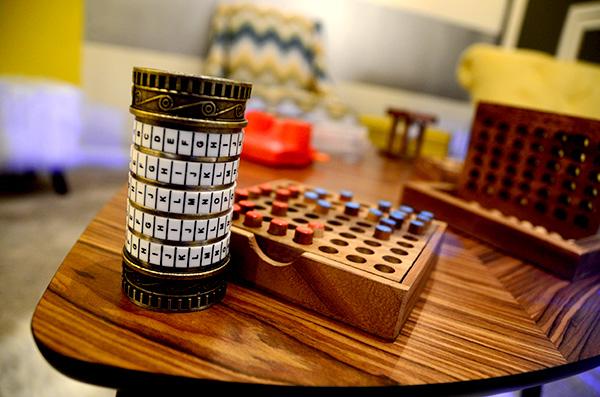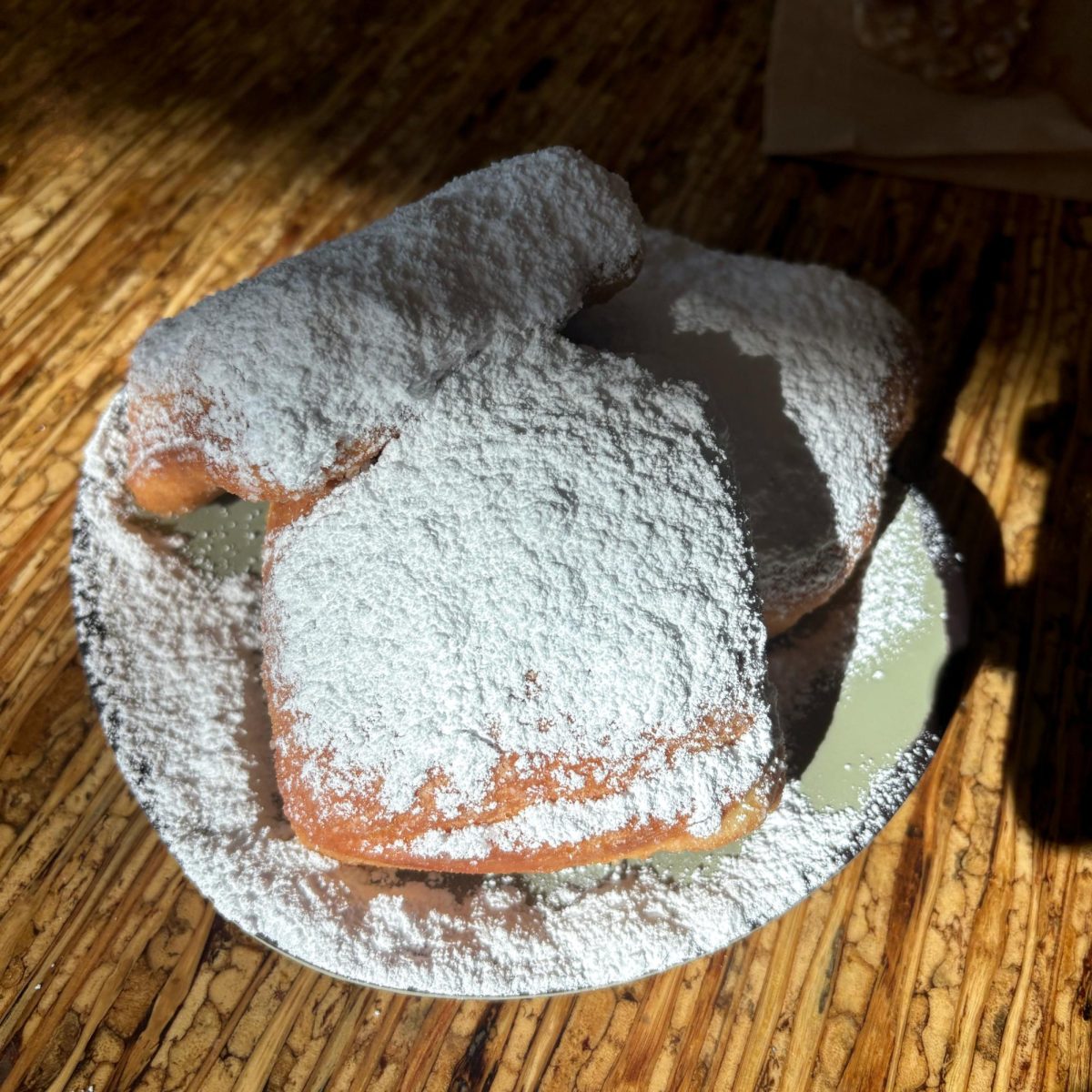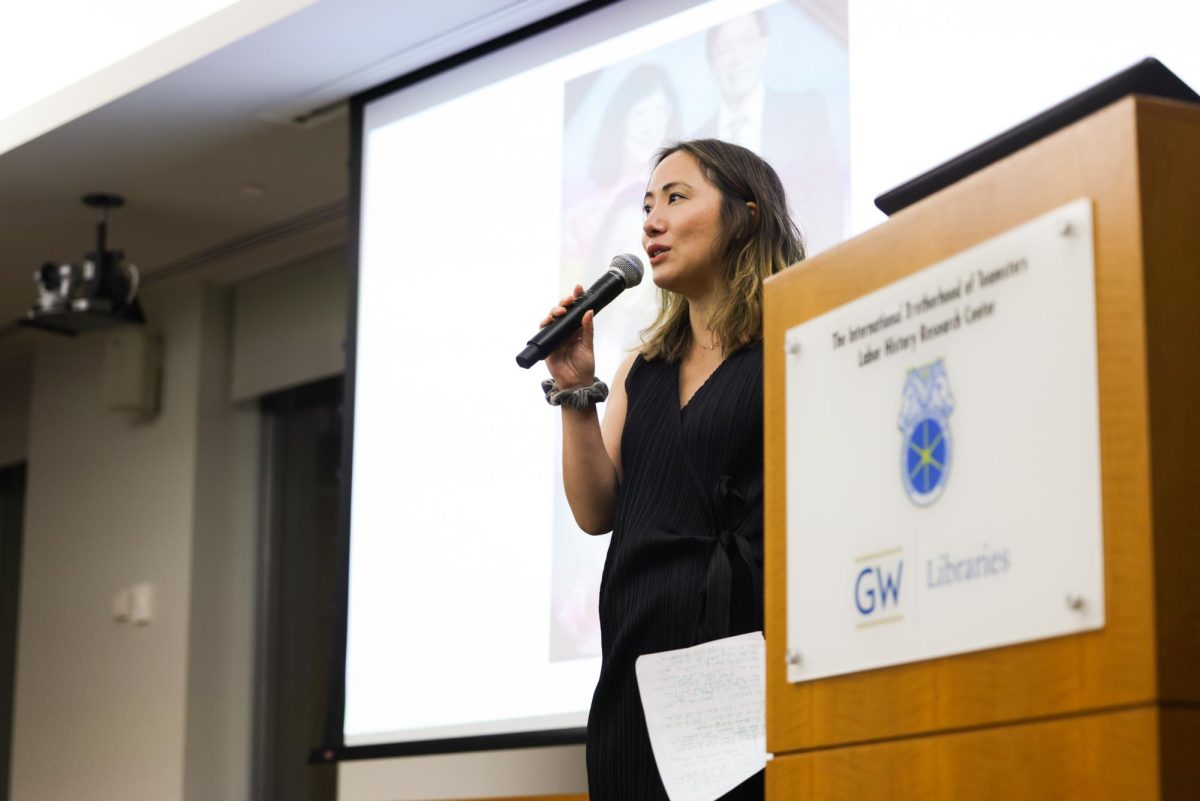The clues only get more baffling. The clock is ticking. You rip apart suitcase after suitcase and book after book, trying to find clues while music reminiscent of Mission Impossible plays in the background. You only have seconds left to crack the code on the safe. Will you be able to escape?
This is Escape Room Live D.C., a tourist attraction in Georgetown. “Spies” have two goals: obtain the key to the room and find the location of the “drop” that is scheduled for tomorrow. Nearly everything in the room is searchable, including the suitcases, the wall decor, the books and various articles of clothing. To make the tasks more difficult, some of the clues are red herrings, designed to throw players off track.
Bright yellow and blue walls welcome spies into a chevron-covered waiting room embellished with mustaches and magnifying glasses. Escape Room defies the notion of the black-and-white noir spy, with eclectic props adding to the espionage theme.
“It’s a room straight out of Pottery Barn,” said Leah Hong, a GW freshman.
The Gamemaster explains the rules to groups of six to eight participants: No cell phones are allowed inside, staff watch the group’s progress from a separate room and the timer will go off at 45 minutes. If a player needs help or breaks a rule, staff members can communicate with the group via intercom.

After the rundown, the group is ushered into the actual Escape Room and the door is locked behind them. Then the game begins.
“The timer made things really stressful. I thought it would be easy at the beginning, but once things got started it became chaos,” Thomas Walker, another freshman, said.
First opened to the public in October, Escape Room has quickly risen in the rankings of D.C. attractions, coming in at No. 14 on TripAdvisor’s list of best activities.
Ginger Flesher thought of the idea for Escape Room when she and her husband visited several similar rooms while on vacation in Europe last summer. They were inspired to bring the concept back to this city with a rich history of espionage, she said.
“We knew there were many other people like us that enjoy doing unique activities that use our brain and are social and interactive,” Flesher said.
Flesher was right: In four months, Escape Room has earned positive reviews from local newspapers and attracted crowds large enough to ensure each of the rooms is booked Thursday through Sunday. The Escape Room is not open Monday through Wednesday. Currently, there are two puzzle rooms with two levels of difficulty.
The Fleshers create the puzzles that confound their customers. Ginger Flesher, a retired math teacher, said they based their designs on the European escape rooms, which they found either challenging or simply impossible.
“It is a collaborative process and a lot of backward design. We specifically wanted the rooms to be do-able without outside assistance,” she said.
Escape rooms create an environment where the time limit and the difficult clues make for a spellbinding experience. Whether your role is as a spy looking for an escape or a pirate looking for treasure, attendees are immersed in the game.

Players say Escape Room’s strict no-cell phone rule also encourages person-to-person interaction that can’t be achieved on a tour or in a movie theater.
Escape rooms are also found in Switzerland, Hungary, Australia and several Asian nations. They’ve opened across the United States from San Francisco to New York.
“It provides a virtual reality,” said Catherine Li, a freshman at MIT and a patron of an escape room in San Francisco. “It’s the same reason why everyone plays online role playing games. It’s real life. You actually pick up [a possible clue] and see what happens.”
After he experienced Escape Room in December, Cody Hill was hired to reach out to media outlets on behalf of the Fleshers. He’s not a full-time employee, and described his work as more of a hobby than a job.
“I just thought more people should know about this great experience. It’s really different from anything else out there,” Hill said.
In light of their success, the Fleshers said they hope to open another location in Maryland or Virginia in the next couple of months. The current location is only large enough for two rooms, and the limited space makes it difficult for prospective spies to book a slot, they said. Ginger Flesher said they would like enough space to fit 80 participants.
“We would love for teams to be able to compete against each other in multiple rooms at the same time,” she said.






